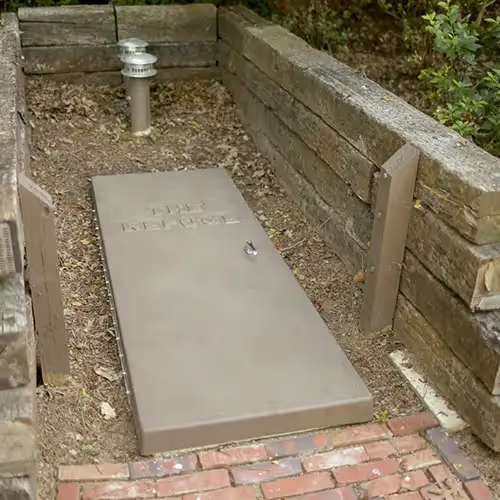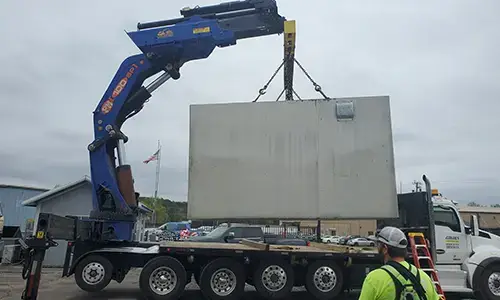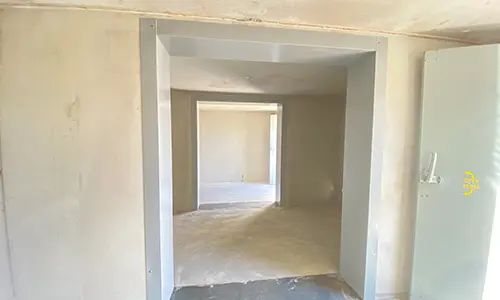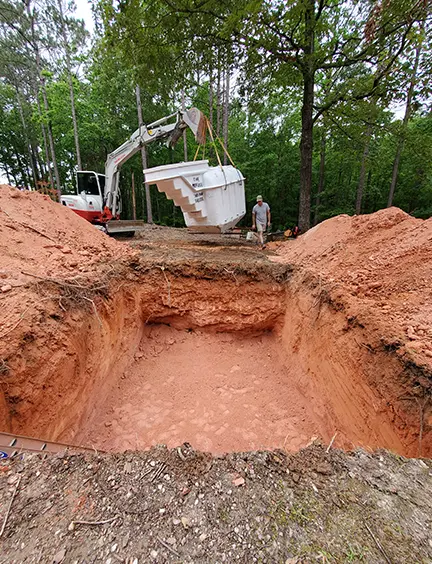Homemade Tornado Shelter: DIY Guide to Storm Safety


Picture this: You’re lounging on the couch, watching TV, when suddenly your phone blasts a tornado warning. The sky outside darkens to an unnatural shade of green, the wind howls, and sirens scream in the distance. You have only minutes to find safety—but do you have a secure place to go?
For those living in tornado-prone areas, having a reliable tornado shelter isn’t just a precaution—it’s a necessity. While commercial storm shelters can cost thousands of dollars, a homemade tornado shelter can be a cost-effective and life-saving alternative—if built correctly.
In this guide, you’ll learn step-by-step how to build your own tornado shelter, from choosing the safest location to using the best materials and ensuring it meets safety standards. Whether you’re reinforcing an interior room or constructing a full underground shelter, we’ll help you create a secure space to protect your family when disaster strikes.
Let’s dive in and start building your storm-proof sanctuary!
Why Build a Homemade Tornado Shelter?
If you’ve ever faced a severe storm, you know how unpredictable and terrifying tornadoes can be. With winds reaching over 200 mph, these violent storms can rip apart homes in seconds—leaving you with nowhere to hide unless you’ve planned ahead.
That’s where a homemade tornado shelter comes in. A DIY storm shelter offers:
Peace of Mind – You’ll always have a secure space to protect your family.
Affordability – A homemade shelter is often cheaper than a professionally installed one.
Customization – You can design it to fit your space and specific needs.
But here’s the thing—not all tornado shelters are created equal. To truly keep you safe, your shelter must meet FEMA (Federal Emergency Management Agency) guidelines, ensuring it can withstand winds over 200 mph and protect against deadly flying debris. Bottom line? A well-built tornado shelter isn’t just an option—it’s a lifesaving necessity. For more information on why investing in a storm shelter is crucial, check out Storm Bunker: Best Investment for Your Home.
Bottom line? A well-built tornado shelter isn’t just an option—it’s a lifesaving necessity.
Best Locations for a Homemade Tornado Shelter
An underground tornado shelter is widely considered the safest option because it provides complete protection from strong winds and flying debris. If you have a basement or backyard space, you can build a storm cellar reinforced with concrete and steel. This type of shelter offers unmatched security during a storm. If you’re considering how to prepare for tornadoes in your specific area, the Prepare for Tornadoes in Huntsville, Alabama guide offers valuable insights on selecting the safest spot.
1. Underground Shelter (Best for Maximum Safety)
An underground tornado shelter is widely considered the safest option because it provides complete protection from strong winds and flying debris. If you have a basement or backyard space, you can build a storm cellar reinforced with concrete and steel. While excavation and waterproofing require time and effort, this type of shelter offers unmatched security during a storm.
- Provides top-tier protection against powerful tornadoes.
- Requires excavation, waterproofing, and proper ventilation to stay safe and dry.
- Can be built in a basement, backyard, or under a garage floor for easy access.
2. Interior Room Shelter (Best for Homes Without Basements)
If an underground shelter isn’t an option, reinforcing an interior room can be a great alternative. A windowless, central room like a closet, bathroom, or pantry provides some protection, but it must be reinforced with steel, concrete, or thick plywood to withstand high winds. This option is also more cost-effective and easier to build compared to an underground storm shelter.
- Must be located in a central area with no windows to reduce exposure to flying debris.
- Walls should be reinforced with steel panels or thick plywood for added durability.
- Consider adding a heavy-duty steel door and extra bracing to withstand strong winds.
3. Garage or Outdoor Shelter (Great for Prefabricated Options)
For those looking for a quick and reliable solution, prefabricated steel or concrete shelters can be installed in a garage floor or backyard. These shelters are pre-engineered for tornado protection and can be buried underground or securely anchored to a foundation. If placed inside a garage, ensure the shelter is accessible even if debris blocks the garage door after a storm.
- Prefabricated shelters offer a fast, ready-made solution for storm protection.
- Must be anchored to the foundation to prevent movement during high winds.
- If installed in a garage, ensure doors can be accessed even if debris falls around them.
No matter where you place your homemade tornado shelter, always prioritize safety, durability, and accessibility. Proper planning and construction can make the difference between life and death when severe weather strikes.
Essential Materials for a DIY Tornado Shelter
Building a homemade tornado shelter requires strong, impact-resistant materials that can withstand extreme winds and flying debris. The right materials will not only enhance safety but also ensure the shelter lasts for years. Below are the essential materials you’ll need to construct a reliable storm shelter.
1. Reinforced Concrete (Most Durable Option)
Reinforced concrete is the gold standard for tornado shelters due to its exceptional strength and impact resistance. It is commonly used for underground shelters and storm cellars because it can withstand winds over 200 mph and protect against flying debris. Concrete can be poured on-site or pre-cast into panels for easier installation.
- Highly durable and resistant to extreme weather conditions
- Ideal for underground shelters, storm cellars, and exterior bunkers
- Works best when reinforced with rebar for added strength
2. Steel Panels (Best for Above-Ground Shelters)
Steel panels are a popular choice for above-ground tornado shelters, as they provide a strong, lightweight, and impact-resistant barrier. When used in combination with concrete or wood, they add an extra layer of protection. For maximum security, 12-gauge or thicker steel panels are recommended.
- Ideal for prefabricated or above-ground shelters
- Provides strong protection against debris and high winds
- Works best when secured with heavy-duty bolts or welding
3. Pressure-Treated Lumber (Great for Interior Shelters)
For indoor storm rooms, pressure-treated lumber is an excellent material for framing and reinforcement. It is commonly used to support plywood or steel panels and can be secured with hurricane-rated fasteners for added durability. Since it is moisture-resistant, it is also suitable for underground shelters where humidity levels may be high.
- Perfect for reinforcing interior safe rooms or closets
- Resistant to moisture and decay, making it suitable for underground use
- Best when combined with steel or plywood for maximum protection
4. Heavy-Duty Hinges & Locks (For Secure Doors)
A tornado shelter is only as strong as its door and locking system. A reinforced storm door should have heavy-duty hinges, a steel frame, and a multi-point locking mechanism. This prevents it from being blown open by powerful winds or damaged by debris. FEMA recommends using storm-rated doors designed specifically for extreme weather conditions.
- Reinforced steel doors provide maximum security
- Three-point locking mechanisms prevent forced entry
- Bolted or welded hinges offer extra strength and stability
5. Ventilation System (Prevents Airflow Blockages)
Proper ventilation is critical, especially for underground tornado shelters, where airflow can be restricted. A well-designed ventilation system ensures a steady supply of fresh air, which is essential if you need to stay inside for an extended period. Installing battery-powered ventilation fans or air vents with protective grilles can help maintain proper airflow.
- Ensures a steady flow of fresh air in sealed or underground shelters
- Battery-powered ventilation fans prevent airflow blockages
- Protective grilles keep out debris and pests
Using the right materials is essential for constructing a homemade tornado shelter that provides reliable protection during severe storms. Reinforced concrete and steel panels offer maximum durability, while pressure-treated lumber is a cost-effective option for indoor safe rooms. A strong door with heavy-duty locks ensures security, and proper ventilation is crucial for long-term safety. By carefully selecting high-quality materials, you can build a tornado shelter that gives you peace of mind when the next storm hits.
Step-by-Step Guide to Building a Homemade Tornado Shelter
Building a homemade tornado shelter requires careful planning and durable materials to ensure maximum protection. Whether you’re constructing an underground shelter, an interior safe room, or a reinforced garage shelter, following these essential steps will help you create a secure space for your family during severe storms.
Step 1: Plan Your Shelter’s Size and Layout
Before building, determine the ideal size and layout of your shelter based on the number of occupants and available space. If you’re unsure about the steps or need some advice, the DIY Tornado Shelter Guide provides a detailed approach to constructing your own.
- Determine capacity – How many people will the shelter need to accommodate?
- Allocate storage space – Ensure enough room for emergency supplies (food, water, medical kit, and essential tools).
- Choose location – Decide whether you’re building an underground, garage-based, or interior tornado shelter.
Pro Tip: If space is tight, consider adding foldable seating or wall-mounted storage to maximize interior room.
Step 2: Prepare the Foundation
A strong foundation is essential for structural integrity. Whether you’re building above ground or underground, the base must be reinforced and secure.
For Underground Shelters:
- Excavate the area – Dig a deep, stable hole to fit the shelter’s base.
- Pour a concrete foundation – At least 6 inches thick to support walls and prevent collapse.
- Waterproof the base – Apply sealants to prevent flooding or moisture damage.
For Above-Ground Shelters:
- Use a reinforced concrete slab – A minimum of 6 inches thick with steel rebar.
- Anchor the structure securely – Heavy-duty bolts should fasten walls to the foundation.
- Ensure proper drainage – Prevent water from pooling around the shelter’s base.
Safety Note: If your area is prone to flooding, an above-ground shelter may be safer than an underground one.
Step 3: Build Reinforced Walls
The walls of your tornado shelter must be strong enough to withstand 200+ mph winds and flying debris. The best materials include reinforced concrete, steel panels, or heavy-duty plywood with steel reinforcements.
- Reinforced Concrete Walls – Use 6 to 12-inch thick concrete blocks, reinforced with steel rebar.
- Steel Panel Walls – Opt for 12-gauge or thicker steel for maximum impact resistance.
- Plywood & Steel Combo – A cost-effective solution where pressure-treated wood is reinforced with steel sheets.
Pro Tip: Secure walls with heavy-duty anchor bolts and welded steel brackets for added strength.
Step 4: Install a Tornado-Proof Door
The entry point is often the weakest part of a tornado shelter, so installing a reinforced storm door is crucial. FEMA recommends using tornado-rated steel doors with multiple locking mechanisms.
- Choose a reinforced steel door – Avoid standard doors; use one specifically designed for storm shelters.
- Secure hinges and locks – Install three-point locking mechanisms and heavy-duty welded hinges.
- Consider an inward-opening door – Prevents debris from blocking the exit after a tornado.
Bonus Tip: Label the inside of the door with emergency exit instructions and keep a crowbar or emergency wrench nearby.
Step 5: Add Ventilation and Emergency Features
A tornado shelter should be comfortable and well-equipped for extended use. Proper ventilation, lighting, and emergency supplies can make a huge difference during a storm.
- Install air vents – Small steel-covered vents allow airflow without compromising safety.
- Store emergency supplies – Keep flashlights, a battery-powered weather radio, and a first-aid kit inside.
- Ensure power backup – Use battery-powered lanterns or a solar charger for essential devices.
Must-Have: A CO2 detector ensures safe air quality in a sealed space.
A well-built homemade tornado shelter can provide lifesaving protection for you and your family during severe storms. By following this step-by-step guide, you can create a secure, cost-effective storm shelter that meets safety standards.
- Plan carefully – Choose the right size and location.
- Reinforce with strong materials – Use concrete, steel, or pressure-treated wood.
- Install a tornado-proof door – Secure it with heavy-duty locks and welded hinges.
- Ensure ventilation and supplies – Stock it with emergency essentials.
When tornado sirens sound, you’ll have peace of mind knowing that you have a safe place to go.
How to Maintain Your Tornado Shelter
Building a homemade tornado shelter is only the first step in ensuring your safety. Regular maintenance is essential to keep it functional and reliable when a storm strikes. Neglecting upkeep can lead to weakened structures, blocked ventilation, or expired emergency supplies. Here’s how to keep your shelter in top condition.
1. Check the Door and Locks
Your shelter’s door is its first line of defense, and any damage or malfunction can compromise security. Over time, rust and wear can weaken hinges, making it difficult to open or close when needed. Regularly inspect and maintain the door to ensure it remains sturdy and secure.
- Inspect for rust, loose hinges, or cracks that could weaken the structure.
- Lubricate locks and hinges to prevent them from sticking during an emergency.
- Test the door’s ease of opening and closing to ensure it functions properly.
2. Inspect Ventilation
A well-ventilated shelter is crucial for safety, as it prevents suffocation and ensures fresh air circulation. Without proper airflow, you risk a buildup of carbon dioxide or other harmful gases. Check your ventilation system frequently to make sure it remains clear and functional.
- Ensure air vents are free of dust, debris, or blockages to maintain steady airflow.
- Check for mold, condensation, or leaks, especially in underground shelters.
- Verify that vent covers are secure to prevent debris from clogging them during a storm.
3. Update Emergency Supplies
A tornado shelter should always be stocked with essential supplies, but food, water, and batteries can expire over time. Keeping your supplies up to date ensures you’re always prepared in case of an extended emergency.
- Rotate stored food and water every 6-12 months to prevent spoilage.
- Replace expired batteries, medical supplies, and flashlights regularly.
- Keep a working weather radio to stay updated on storm warnings.
Common Mistakes to Avoid
Even a well-built tornado shelter can fail if key safety measures are overlooked. Many homeowners make simple but dangerous mistakes that reduce the shelter’s effectiveness. Here are some of the most common errors and how to avoid them.
1. Using Weak Materials
Choosing the wrong materials can put your shelter at risk. Standard drywall, thin plywood, or unreinforced structures won’t stand up to the extreme winds of a tornado. To maximize durability, always use FEMA-recommended materials.
- Avoid thin or weak materials that can easily break under high winds.
- Use reinforced concrete, steel panels, or pressure-treated lumber for stability.
- Follow FEMA guidelines to ensure your shelter meets safety standards.
2. Forgetting Ventilation
One of the most overlooked aspects of a tornado shelter is proper ventilation. Without it, oxygen levels can drop quickly, creating a dangerous situation. To prevent this, make sure your shelter has a reliable airflow system.
- Install multiple vents to allow fresh air to circulate throughout the shelter.
- Check that vent openings are covered with debris-proof grilles to prevent clogging.
- Ensure there’s enough ventilation for the number of people expected to use the shelter.
3. Not Anchoring the Structure
A tornado shelter must be properly secured to withstand the force of strong winds. Above-ground shelters, in particular, need to be firmly anchored to a concrete foundation to prevent them from being lifted or moved.
- Secure above-ground shelters with heavy-duty bolts to prevent displacement.
- Reinforce underground shelters with steel-reinforced doors to prevent collapse.
- Ensure all structural connections are reinforced for added stability.
A tornado shelter is only effective if it’s properly maintained. By performing regular inspections, updating emergency supplies, and avoiding key mistakes, you can ensure your homemade tornado shelter remains a safe and reliable refuge when you need it most. Taking proactive steps today could make all the difference in keeping you and your family protected during a disaster.
Real-Life Example: A Tornado Survivor’s Story
John and his family live in Oklahoma, where tornadoes are an annual threat. In 2019, they barely escaped a devastating twister, which prompted them to take action. Determined never to be caught unprepared again, John decided to build a homemade tornado shelter in their basement.
Using reinforced concrete walls and a steel door, he spent two months constructing a secure space that could withstand the force of an EF-5 tornado. The hard work paid off. In 2021, when another tornado swept through their town, John and his family had a safe place to go. Instead of fearing for their lives, they calmly entered their shelter and waited out the storm.
“Building our own shelter gave us peace of mind,” John recalls. “When the storm came, we didn’t panic—we just got inside and knew we were safe.”
Conclusion
A homemade tornado shelter is more than just a DIY project—it’s a life-saving investment. Whether you reinforce an interior room, build an above-ground structure, or dig an underground storm cellar, proper planning and construction are key to ensuring your safety.
Tornadoes strike with little warning, leaving no time to prepare when disaster is already at your doorstep. Don’t wait until storm season arrives—start building your tornado shelter today. Your safety and your family’s well-being depend on it.




